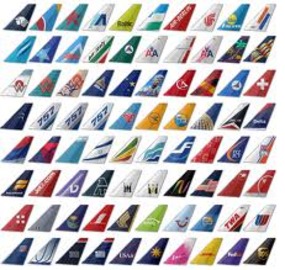Pan Am
Airline | Airline
Pan Am (written-out as "Pan American World Airways", abbreviated as "PAA" for "Pan American Airways") is credited for many innovations that shaped the international airline industry, including the widespread use of jet aircraft, jumbo jets, and computerized reservation systems. Identified by its blue globe logo ("The Blue Meatball"), the use of the word "Clipper" in its aircraft names and call signs, and the white uniform caps of its pilots, the airline was a cultural icon of the 20th century.
Founded in 1927 by entrepreneur Juan Trippe, Pan Am commenced operations as a scheduled airmail and passenger service flying between Key West, Florida, and Havana, Cuba. In the 1930s, the airline purchased large numbers of flying boats and focused its route network on Central and South America while later adding some transatlantic and some transpacific destinations. By the early 1950s, Pan Am enjoyed a near monopoly of international routes. The airline led the aircraft industry into the Jet Age with large purchases of new jetliners and as the launch customer for the Boeing 707. In 1970, Pan Am received its first widebody Boeing 747, again as the type's launch customer. The revolutionary aircraft allowed Pan Am to fly large numbers of passengers at a long range with fewer stops and was a mainstay in the airline's fleet until its bankruptcy. Pan Am's primary hub and flagship terminal was the Pan Am Worldport at John F. Kennedy International Airport in New York City.
Subject ID: 3847
MorePan Am (written-out as "Pan American World Airways", abbreviated as "PAA" for "Pan American Airways") is credited for many innovations that shaped the international airline industry, including the widespread use of jet aircraft, jumbo jets, and computerized reservation systems. Identified by its blue globe logo ("The Blue Meatball"), the use of the word "Clipper" in its aircraft names and call signs, and the white uniform caps of its pilots, the airline was a cultural icon of the 20th century.
Founded in 1927 by entrepreneur Juan Trippe, Pan Am commenced operations as a scheduled airmail and passenger service flying between Key West, Florida, and Havana, Cuba. In the 1930s, the airline purchased large numbers of flying boats and focused its route network on Central and South America while later adding some transatlantic and some transpacific destinations. By the early 1950s, Pan Am enjoyed a near monopoly of international routes. The airline led the aircraft industry into the Jet Age with large purchases of new jetliners and as the launch customer for the Boeing 707. In 1970, Pan Am received its first widebody Boeing 747, again as the type's launch customer. The revolutionary aircraft allowed Pan Am to fly large numbers of passengers at a long range with fewer stops and was a mainstay in the airline's fleet until its bankruptcy. Pan Am's primary hub and flagship terminal was the Pan Am Worldport at John F. Kennedy International Airport in New York City.
With a large and modern fleet, Pan Am reached its peak in the early 1970s. Pan Am was a founding member of the International Air Transport Association (IATA), the global airline industry association. In an era dominated by flag carriers that were wholly or majority government-owned, it was also the unofficial overseas flag carrier of the United States.
Subject ID: 3847
Subject ID: 3847
